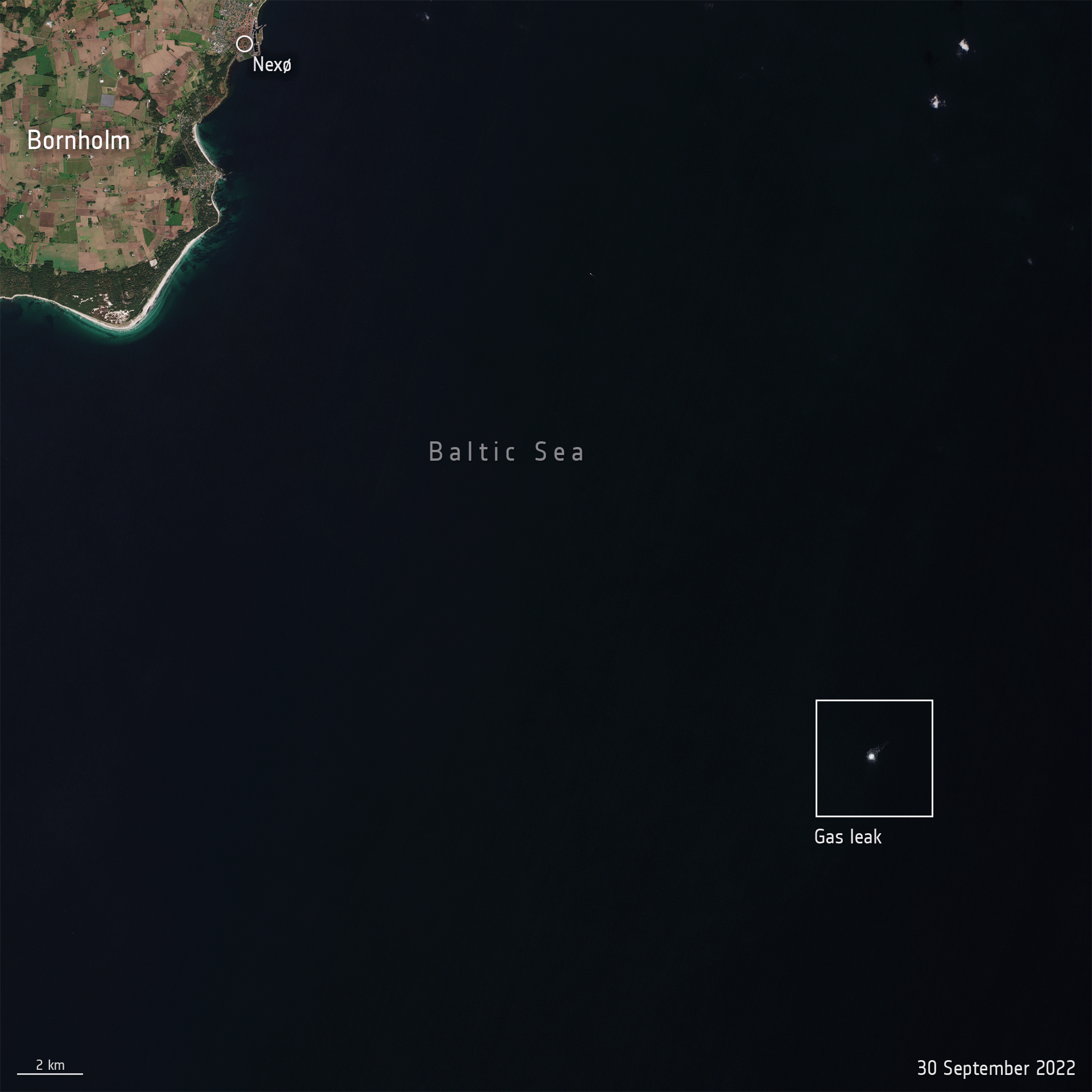At the end of September, a series of explosions occurred on the Russian Nord Stream and Nord Stream-2 gas pipelines, which led to their destruction. According to most experts, their cause was sabotage, and, apparently, organized by Russia itself in order to increase pressure on European countries, as well as to obtain the opportunity to renounce their obligations by creating force majeure.

At the time of the explosion, Nord Stream and Nord Stream-2 were not working. However, there were still up to 300 thousand tons of natural gas inside them (mostly it consists of methane). The destruction of gas pipelines led to its release into the atmosphere.
Shortly after the explosion, spacecraft photographed disturbances in the Baltic Sea caused by the rise of methane bubbles. They were also captured by one of the radar satellites of the constellation ICEYE. The analysis of the images showed that the diameter of the disturbed areas was about 500-700 meters.

The GHGSat and Sentinel-2 satellites belonging to ESA also took part in monitoring the leak. Their aim was to measure the concentration of methane. The fact is that although this gas is non-toxic, at the same time it causes a powerful greenhouse effect. The ingress of a large amount of methane into the atmosphere can have a serious impact on the climate, increasing the processes of global warming.

Satellite measurements carried out on September 30 showed that the rate of methane leakage was 79 thousand kg per hour. This is a record figure in the entire history of observations. At the same time, this figure refers to only one of the four leaks.

Scientists will need time to fully assess the full scale of the events that have occurred and their impact on the environment. But even according to preliminary estimates, the amount of methane released into the atmosphere is equivalent to a third of the annual greenhouse gas emissions of a country like Denmark.
According to https://www.esa.int
Follow us on Twitter to get the most interesting space news in time
https://twitter.com/ust_magazine

